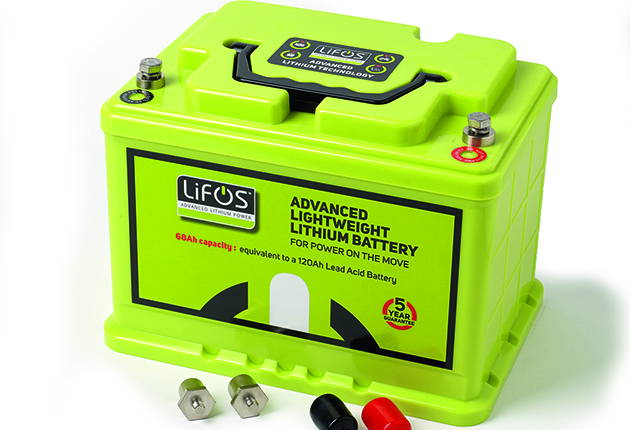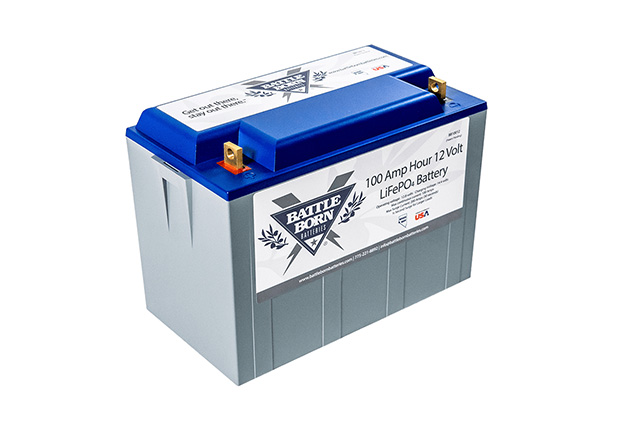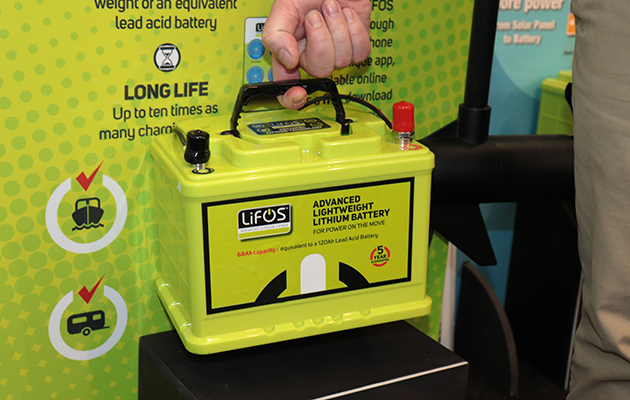Duncan Kent explains why you should opt for quality when installing a lithium-ion battery, plus our pick of the best lithium iron phosphate batteries on the market
The key to a truly successful Lithium-ion battery installation, for those looking to go for newer battery technology or even go the whole hog and convert to an electric boat, is to use top-quality Lithium-ion cells with an equally top-notch battery monitoring system (BMS).

Duncan Kent is a technical writer for marine publications and websites
The best BMS will be tailor-made to suit the installation, while the worst will just be crude protection to avoid a total meltdown situation.
If your goal is to have a safe, reliable and long-lasting energy storage system on board then don’t try to save a few quid on the BMS.
As with all things these days, you get what you pay for.
But much worse, in the case of Lithium-ion installations, using cheap, badly made components can not only waste a great deal of money in the long run, but also create a major fire risk onboard.
Note: We may earn a commission when you buy through links on our site, at no extra cost to you. This doesn’t affect our editorial independence.
Lithium-ion products
Some common 12V lithium iron phosphate (LiFePO4) or LFP marine batteries available in the UK:
Lifos LiFePO4
Lifos LiFePO4 batteries are advertised as ideal ‘drop-in’ replacements for lead acid house batteries without the need for additional charging equipment.
Said to be compatible with every lead-acid charger and DC to DC converter currently on the market, they feature a built-in BMS that monitors and controls its charging and discharging functions to ensure maximum safety, reliability and a long life.

LiFOS batteries don’t need additional charging equipment
Weighing 25% less than the equivalent lead acid battery and being 30% smaller, Lifos claim high discharge capability (<1kW/120A), a 1C charge rate and the ability to provide up to 2,750 cycles at 90% DoD, or up to 5,000 cycles at 50% DoD.
Warranty is five years.
Victron Smart LFP
Known for their quality electrical products, Dutch firm Victron supplies ‘drop-in’ LFP batteries in 60-300Ah capacities, for 12.8 or 25.6V installations, which will provide 2,500 cycles when discharged down to 80% DoD, or up to 5,000 cycles down to 50 % only.

Many lithium batteries have a built-in battery management system. Credit: Emrhys Barrel
The Smart label means they can be remotely monitored using an integral Bluetooth module, but they do require an external Victron VE.Bus BMS.
Current discharge is limited to 100A per 100Ah capacity and the maximum number of batteries connected in parallel is five.
ReLion InSight
These drop-in replacement LFP batteries have a built-in BMS plus a unique heat sink that cools the cells while they’re being charged.

ReLion batteries include a heat sink to cool the cells during charging. Credit: Emrhys Barrell
The 120Ah version can be charged at up to 120A and discharged to 200A.
They also have a CanBus port so that the parameters of the batteries can be monitored at all times.
Battle Born

Battle Born is a well known US brand of lithium ion phosphate batteries
A well-known brand of LFP from the USA, Battle Born’s ‘drop-in’ 100Ah LiFePo4 batteries can accept a 1C charge and take a 100A discharge current (peaking at 200A for 20s only) without damage.
They also include a comprehensive, built-in BMS that manages voltage thresholds, temperatures, cell balancing and provides short circuit protection.
New non-lithium batteries
Oasis Firefly carbon foam
Firefly’s proprietary technology comprises a carbon-based porous foam with thousands of open cells that distribute the sulphuric acid electrolyte over a wider area to increase the efficiency of the lead-acid chemistry.
The ‘microcells’ in the carbon foam electrolyte structure enable higher discharge current rates, increase energy density and extend the cycle life (<3x).

Carbon foam batteries are a modern version of lead acid and offer an alternative to lithium
It also allows much faster recharging compared to a conventional lead-acid battery, which is ideal when charging from a limited period charge source such as solar or alternator.
Fireflies are extremely resistant to sulphation and can utilise standard, multi-stage lead-acid charger and alternator regulator.
Lead Carbon AGM
In these deep-cycle Absorbed Glass Mat (AGM) batteries the carbon cathode is said to increase charge acceptance, thereby speeding up the bulk charging process, increase the number of useable cycles and reduce damaging sulphation to the plates.
Lead crystal
Lead Crystal batteries are a sealed lead-acid (SLA) with an innovative, non-corrosive SiO2 acid electrolyte that crystallises over time, making it more robust and improving the performance.
The high-purity lead calcium selenium plates and the electrolyte are held in a micro-porous matting, so the batteries can be charged twice as quickly as a regular SLA, discharged deeper, cycled more often, used in more extreme temperatures than lithium-ion and provide a longer service life than many other AGMs.
Continues below…
Solar Technology International LiFos battery
From a selection of the latest kit in Yachting Monthly’s New Gear pages
Skippers’ Tips: Battery cross-connect & boat checks when leaving
Seasoned skippers and Yachting Monthly experts give their advice on a whole range of issues for the cruising sailor
Sailing with solar power: A practical guide
The latest solar technology makes self-sufficient cruising much more achievable. Duncan Kent gives the lowdown on everything you need to…
How lithium batteries are changing onboard power
Duncan Kent investigates the technology used in lithium batteries and explains what to consider in matching them with a management…
They also have a very low self-discharge rate so can be stored for up to two years without charging.
Using this cleaner technology, with no cadmium or antimony, Lead Crystal batteries are up to 99% recyclable and, more importantly, classified as non-hazardous goods for transport.








